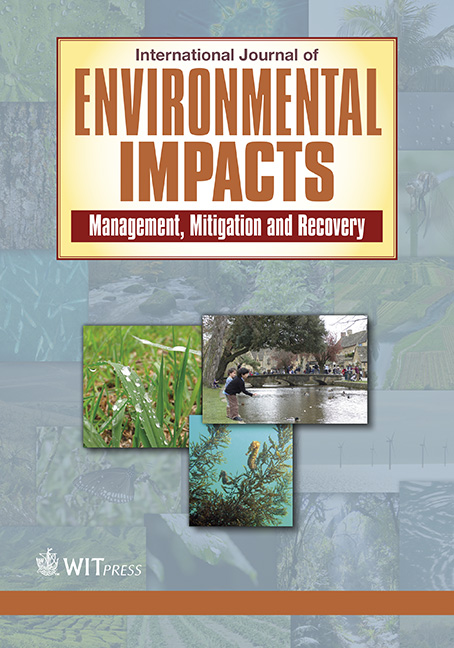Influence of improved methodology and increased spatial resolution on gridded emissions
Price
Free (open access)
Volume
Volume 2 (2019), Issue 2
Pages
12
Page Range
161 - 173
Paper DOI
10.2495/EI-V2-N2-161-173
Copyright
WIT Press
Author(s)
M. S. Plejdrup, O.-K. Nielsen & H. G. Bruun
Abstract
Spatial distribution of emissions is a key element in assessing human exposure to air pollution through the use of dispersion modelling. The quality of the spatial emission mapping is crucial for the quality, applicability and reliability of modelled air pollution levels, estimated human exposure and incurred health effects and related costs, all very important information for policymakers in decisions of implementation of environmental policies and measures. Detailed information on spatial distribution of emissions allows for a more targeted regulation, implementing measures focussing on areas where emissions are highest, allowing for more cost-effective initiatives on local, regional and national scale. The purpose of the MapEIre project, funded by Ireland’s Environmental Protection Agency, is to develop a high-resolution spatial mapping of the Irish emission inventory. The work is state-of-the-art and combines a large amount of statistical data with detailed spatial information to allow for a complete spatial emission mapping on a 1 km by 1 km resolution.
When comparing the results from the MapEIre project with those of the previous studies, the impact of both methodological refinements and higher spatial resolution becomes very visible. A low resolution, such as the 50 × 50 km used in the official reporting, causes important variations to be obfuscated and, if used for air quality modelling, would introduce significant uncertainty. Methodological simplifi- cations can also have significant influence on the results, which has been illustrated in this paper using specific examples comparing the detailed MapEIre methodology with less detailed methodologies used in the previous studies.
The results from MapEIre represent a significant improvement over previous methodologies and will be a strong input for future air quality modelling.
Keywords
air pollution, emission inventory, emission mapping, GeoKey, gridding, spatial emissions, spatial resolution.




